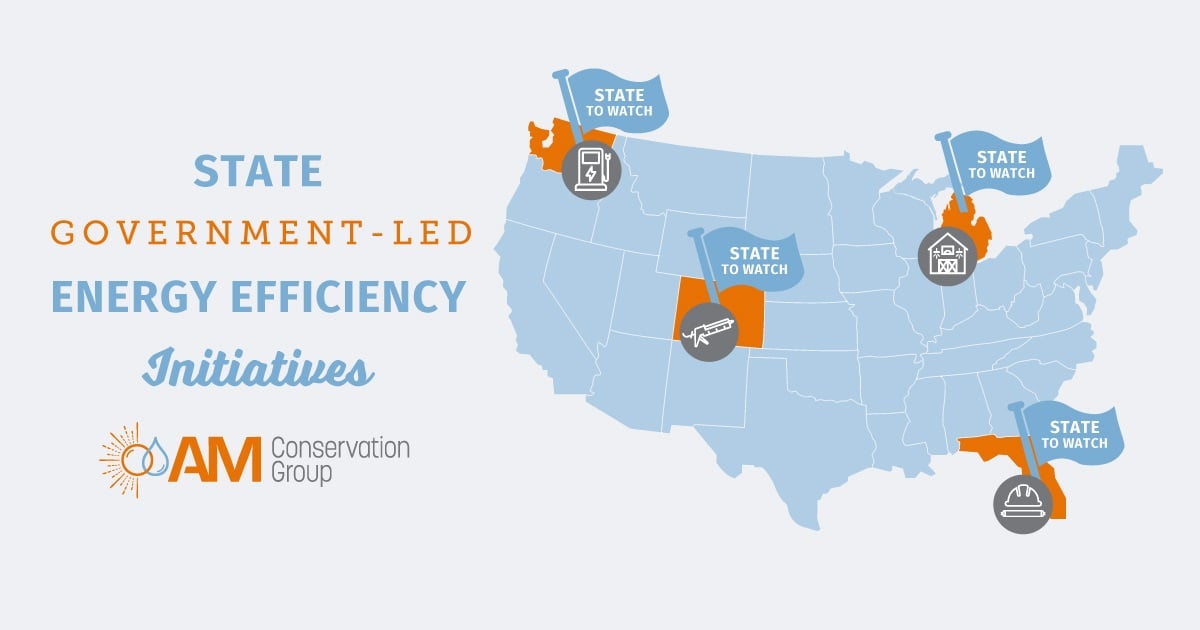State government has enormous sway in advancing energy efficiency policies. But state government goes beyond traditional energy offices to include public universities, economic development agencies and general services agencies. State government gets involved in energy efficiency through these entities to focus on three common initiatives: financial incentive programs for consumers, businesses and industry; lead-by-example policies and programs to improve the energy efficiency of public facilities and fleets; and research and development for energy efficiency technologies and practices.

Financial incentives
In addition to the nearly ubiquitous ratepayer funded programs that utilities offer, many states also offer financial incentives to make adopting new technologies more attractive. They come in many forms: rebates, loans, grants or bonds for energy efficiency improvements; income tax credits and deductions for individuals or businesses; and sales tax exemptions or reductions for eligible products.
Incentives help shrink two of the main barriers for early adoption of energy efficiency investments: up-front costs and slow payback periods for upgrades. They also raise consumer awareness of eligible products and create a more competitive market, which in turn fosters innovation and lower prices. As economies of scale improve, the products can eventually compete in the marketplace without the help of incentives.
State to watch: Colorado
In February 2018 the Colorado Energy Office launched the Colorado Residential Energy Upgrade Loan, a statewide residential program that offers long-term, low-interest loans to homeowners seeking energy efficiency improvements such as air sealing, insulation, windows, lighting and appliances. Loans range from $500 to $35,000 for 3- to 15-year terms, can cover the cost of the entire project, and helps make home energy upgrades easy and affordable.
Lead by example
Monkey see, monkey do is not just for children—it helps adults transform their habits in leaps and bounds as well. State governments can advance energy-efficient technologies and practices in the marketplace by promoting energy efficiency in their own everyday operations, typically public sector buildings and fleets. It even has its own acronym, a practice commonly known as “Leading by Example” (LBE).
Lead by example policies dovetail nicely with the pressing need for fiscal austerity, as they function as a proven strategy for improving operational efficiency. LBE achieves several goals at once: It demonstrates leadership, reduces carbon footprint, creates a steady market for energy efficiency products, promotes sustainable energy alternatives, provides the health and productivity benefits associated with working in a smart building and reduces maintenance costs.
State to watch: Washington
In 2018, Washington established several new LBE initiatives. The most recent spate includes a focus on zero-energy buildings and requires state agencies to prioritize the purchase or lease of battery electric vehicles. As an added bonus, the LBE also set goals for state agencies to purchase environmentally preferable products.
Research and development (R&D)
R&D programs encourage the out-of-the box thinking and innovation that is at the root of all advances. These programs leverage resources in the public and private sectors, foster collaborative efforts and can bring to market new energy-efficient technologies. They also put a premium on cooperation among organizations from different sectors and backgrounds to further spur innovation.
Another aspect of R&D programs is they encourage states to come together and pool resources. In our information-abundant age, information sharing becomes increasingly critical. Now, facilitated by the Association of State Energy Research & technology Transfer Institutions (ASERTTI) membership, states can benefit from one another’s research.
The 2018 State Energy Efficiency Scorecard from the American Council for an Energy-Efficient Economy (ACEEE) reports that “states without R&D institutions can use this shared information as a road map to begin or advance their own efficiency programs. Even leading states can improve or add to their R&D efforts by drawing from other states’ programs and best practices.”
State to watch: Florida
One of the darlings of collaborative R&D is Florida’s universities, who collectively host an array of energy efficiency research and invest more than $5 million in the institutions that lead this work. The University of Florida’s Florida Institute for Sustainable Energy leads the way on developing efficient construction and lighting—and comprises more than 150 faculty members at 22 energy research centers. The University of Central Florida’s Florida Solar Energy Center brings its expertise to bear on energy-efficient buildings, schools and standards. The state created the Florida Energy Systems Consortium, which brings 12 universities together to share their successes, failures and works in progress. The upshot of these multiple collaborations is improved energy efficiency and expanded economic development for the state.
State to watch: Michigan
The Michigan Energy office (MEO) has initiated an effort to improve energy efficiency and renewable energy programs in the under-served agricultural and rural market. “Michigan’s agricultural sector is one of the state’s top three industries, and 25 percent of the state’s population lives in rural areas,” said Anne Armstrong Cusack, executive director of the Michigan Agency for Energy (MAE), of which the MEO is part. “It contributes over $100 billion annually to Michigan’s economy and is second only to California in agricultural commodity diversification. These efforts will include assessing existing state policies and programs and their effectiveness, developing a report that will include recommendations for improving EWR and renewable energy programs and services for agriculture and rural customers, and recommending policies and programs that will support EWR and renewable energy development in the agriculture sector and rural communities.






